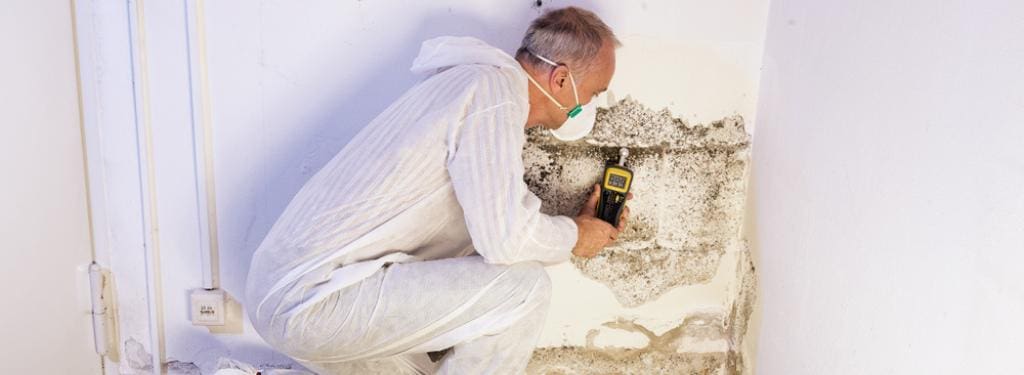Assistance on What to Do After Mold Remediation
Effective Post Mold Removal Solutions for Your Home
Mold growth in homes can be a consistent concern, commonly needing a systematic method for effective post-remediation options. From comprehending the elements that add to mold advancement to applying proper cleansing methods and dampness control actions, the process can be complex yet critical for keeping a healthy living environment. Additionally, checking out all-natural removal solutions and developing a regular for continuous maintenance are vital components of a detailed mold and mildew removal strategy. As homeowners strive to deal with mold and mildew worries, finding the most reliable solutions becomes critical for the health of their families.
Recognizing Mold Growth Aspects
Mold growth is affected by a variety of elements that are essential to understand in order to effectively deal with and avoid its expansion. Understanding these variables is vital in implementing effective mold and mildew removal strategies. The key aspect adding to mold and mildew development is dampness. Mold and mildew spores require dampness to thrive and sprout, making damp or damp environments extremely at risk to mold invasions. Poor air flow can also lead to moisture accumulation, creating an excellent breeding place for mold and mildew.

Furthermore, air flow and light direct exposure can impact mold growth. Areas that do not have proper air flow and all-natural light are a lot more vulnerable to mold development. By resolving these aspects adequately, individuals can effectively mitigate mold and mildew growth and secure their living atmospheres.
Correct Mold And Mildew Cleansing Strategies
Using reliable cleaning approaches is vital in resolving and protecting against the reoccurrence of mold and mildew contamination in indoor settings. When dealing with mold, it is critical to focus on security by wearing safety gear such as goggles, handwear covers, and masks. The primary step in proper mold and mildew cleaning is to contain the damaged location to stop the spread of spores to unpolluted locations. This can be attained by sealing off the space and using air scrubbers or unfavorable air equipments to preserve air high quality.

Carrying Out Moisture Control Steps
To successfully avoid mold development and contamination in interior environments, carrying out moisture control actions is vital. In addition, ensuring correct air flow in areas susceptible to moisture buildup, such as kitchen areas and washrooms, can aid minimize the risk of mold development. By vigilantly applying these moisture control procedures, homeowners can properly decrease the chance of mold and mildew recontamination and keep a healthy and balanced interior setting.
Utilizing Natural Remediation Solutions
After successfully executing dampness control actions to prevent mold growth in interior environments, property owners can currently check out the efficiency of all-natural remediation remedies in preserving a healthy living area. Natural removal remedies make use of ecologically pleasant approaches to combat mold and mildew and mold, making them a preferred selection for those looking for safe alternatives. By integrating these natural removal services into their cleansing routines, house owners can successfully fight mold growth while promoting a healthier interior environment for themselves and their households.

Maintaining a Mold-Free Atmosphere
Regularly examining locations susceptible to mold growth, such as bathrooms, basements, advice kitchens, and attic rooms, is essential. Appropriate ventilation in areas with high humidity levels is additionally crucial to avoiding mold development.
Furthermore, preserving tidiness in the home is essential for mold and mildew prevention. Keeping indoor plants in check and making sure appropriate water drainage in outdoor landscaping can reduce dampness accumulation, reducing the possibility of mold and mildew infestations.
Conclusion
In verdict, it is crucial to address mold and mildew development factors, make use of appropriate cleaning techniques, implement wetness control procedures, use natural removal services, and keep a mold-free atmosphere in order to effectively take care of post mold and mildew remediation in your home - what to do after mold remediation. By complying with these techniques, you can prevent mold and mildew from reoccuring and ensure a healthy living atmosphere for you and your family members
The primary element adding to mold and mildew growth is moisture. Mold spores need wetness to thrive and germinate, making humid or damp environments extremely prone to mold and mildew problems.To effectively avoid mold growth and contamination in indoor environments, executing wetness control procedures is vital. In addition, making certain correct air flow in locations vulnerable to moisture build-up, such as kitchens and restrooms, can help decrease the risk of mold development.After efficiently applying dampness control actions to protect against mold and mildew development in indoor atmospheres, property owners can now explore the effectiveness of natural removal remedies in maintaining a healthy and balanced living room.